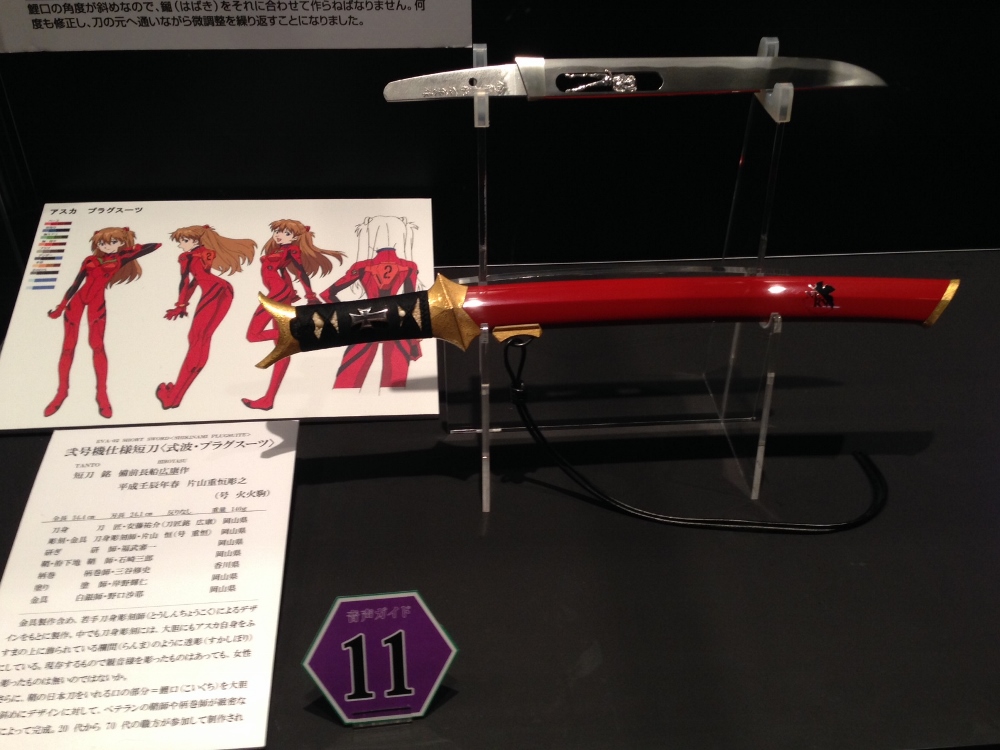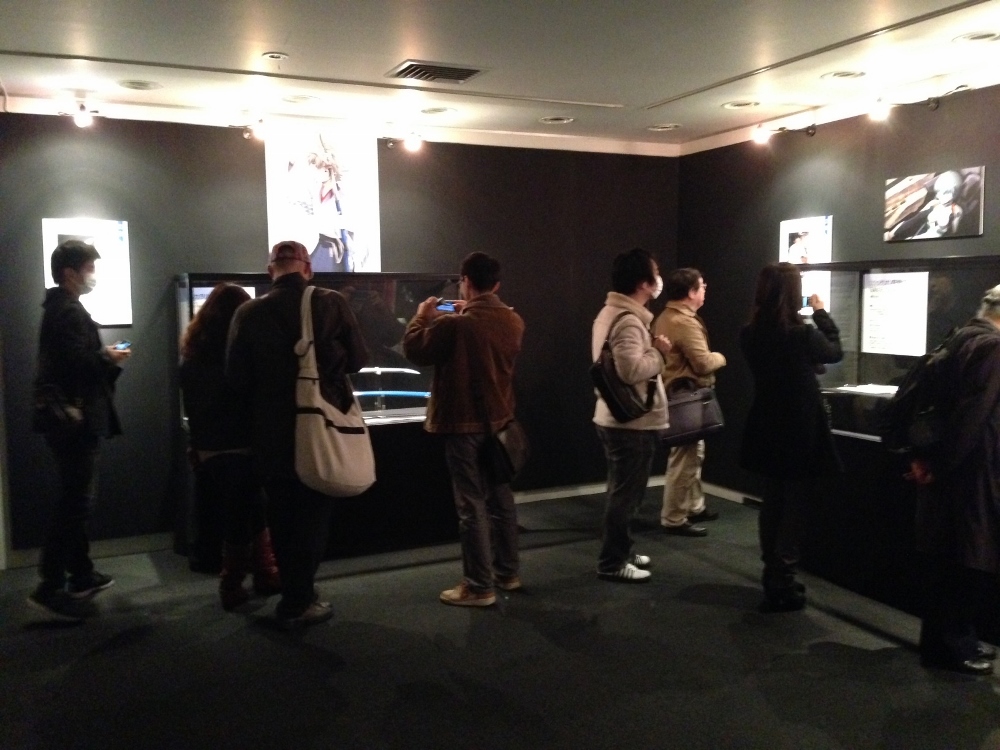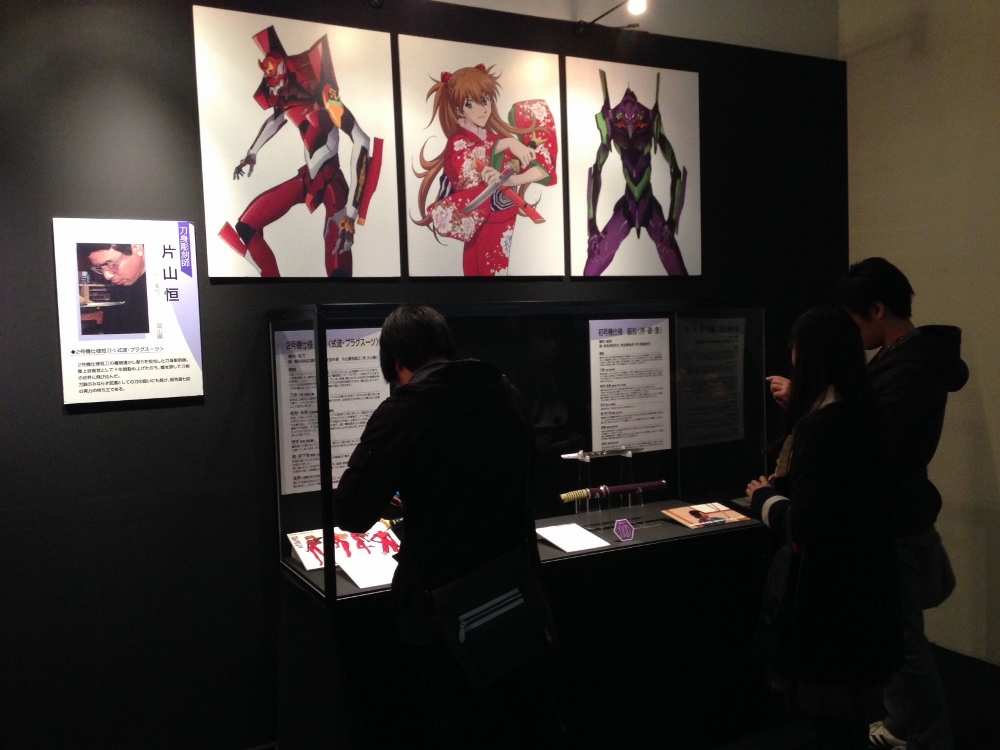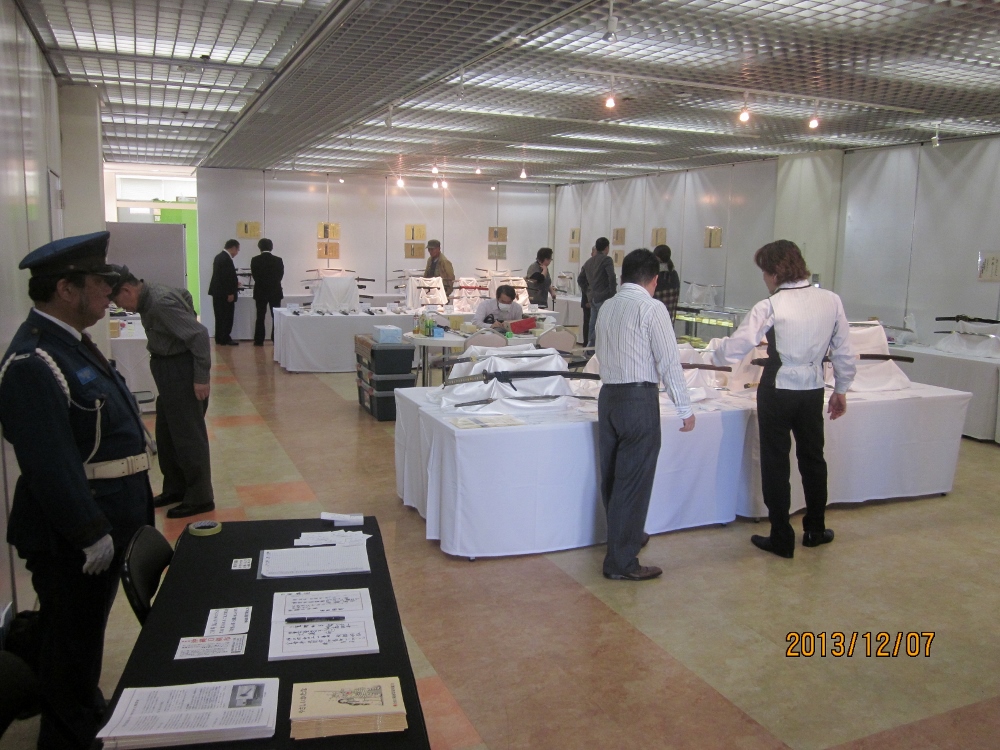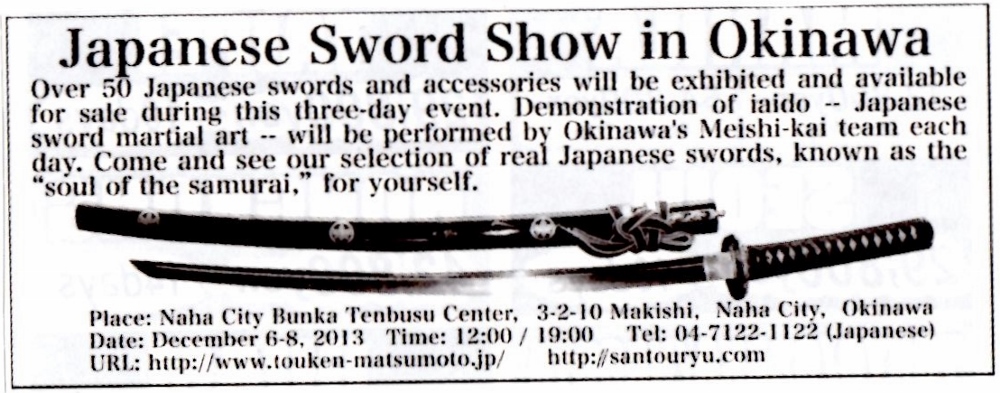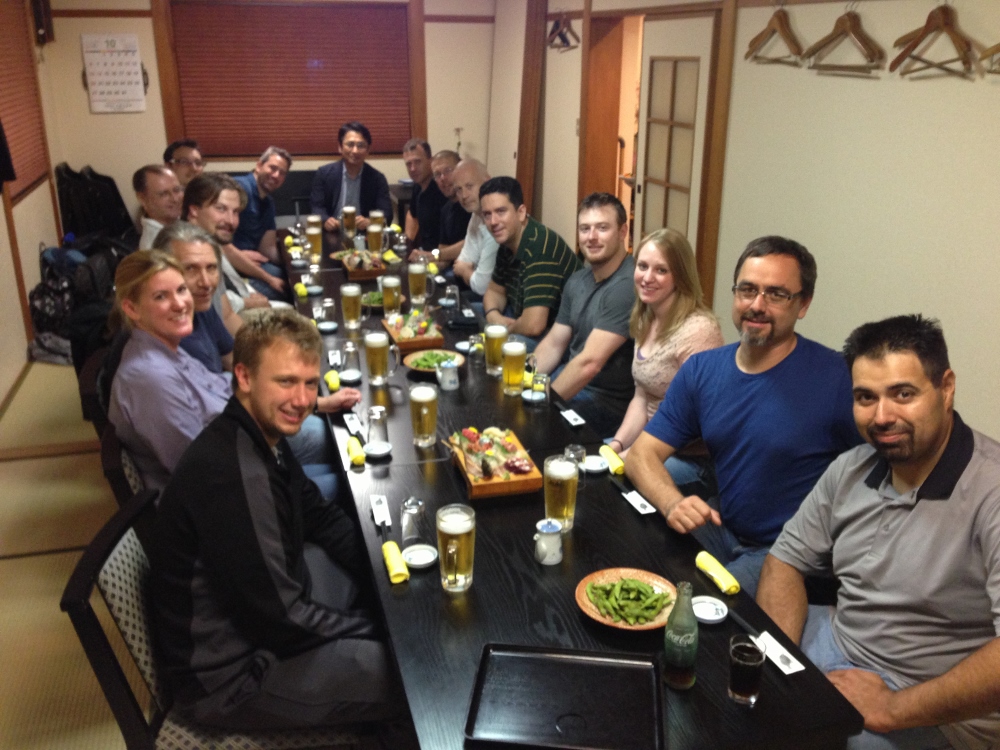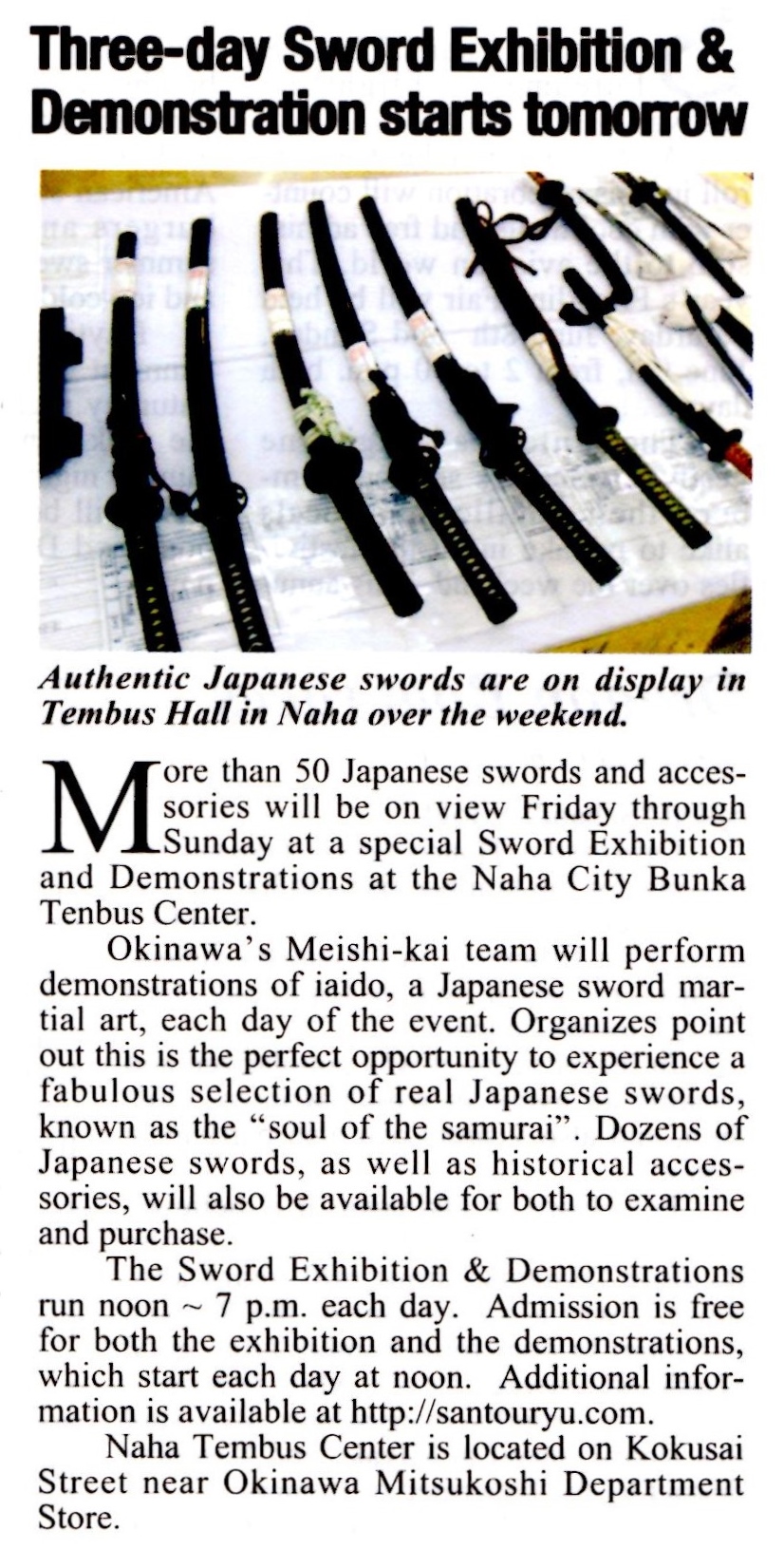Today is the last day of a special event aimed at attracting a younger audience’s interest in the Japanese sword at Uenomori museum in Tokyo. I have to admit that I was surprised at how many young people were found at the event, looking at the displayed items. However, maybe I shouldn’t be, as at this event, old skills are meeting young culture, and, in a progressive tradition, stretching out a hand to the fans of the Manga ‘Evangelion’, one of Japan’s most popular comics, that has spread to both Europe and the US.
Real Nihonto are fitted in replicas of the Koshirae featured in the comic, and displayed with explanations about sword smiths and their methods. When the exhibition is over in Tokyo, it will move on to France and Spain, to meet and greet enthusiasts of both sword making and Manga, and better their knowledge about the Japanese sword and the way it is made. Though this event is unusual, it is my hope that it will further the interest for the Japanese sword and its history and tradition.
Sword smiths are, contrary to what many think, highly creative and have always merged old traditions with new ideas and methods. This is but one way to keep these traditions and methods interesting to a different audience.


